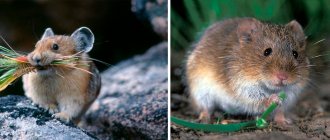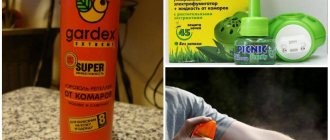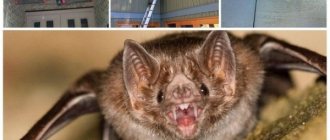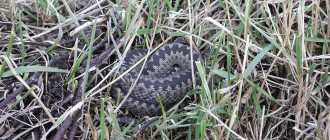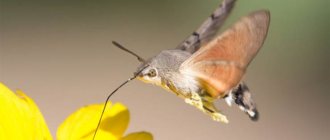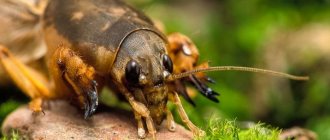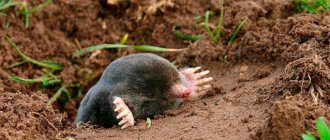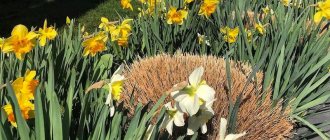Signs of rodents. What you need to know about them
Rodents are hares, rats, mice, etc. There are more than 1,700 species of them. All wild species also belong to the category of rodent pests, but not all of them can be found on the site. The ones you find at the dacha will be medium in size (8-35 cm). All rodents are capable of causing serious damage to the crops on your site. If they start in the garden, it is easy to determine by the following signs:
- damaged (gnawed) bark on the trunk and shoots, branches, buds, roots;
- a network of holes in the ground, eating underground elements of bulbous plants;
- destruction of the crop during ripening and its reserves during storage.
Attention! Shrews and moles, which do not fall into the category of rodents, are also considered garden pests. They are insectivores and cause damage to garden crops by digging into the root system. On the other hand, along the paths of these pests, mice enter the area en masse and attack the crop.
Why do earth rats appear?
There are several main reasons why there are rats in a summer cottage. The first is the abundance of food, which allows rodents not only to eat plenty, but also to stock up for the winter. The second reason for the appearance of earth rats in the countryside is the large number of places suitable for constructing a convenient and safe shelter.
Rat "gang"
Rodents make nests in cellars and basements, sheds and outbuildings, and also actively inhabit tunnels previously dug by moles and shrews.
Pest mice: classification
Mice do not like people and rarely settle in houses, but they willingly come to inhabited and well-groomed areas for food. Types of rodent pests:
- Wood mouse. It has a body 9-11 cm in length and a short tail, up to 10 cm. Natural habitat: forests, gardens, fields, meadows. Digs a deep hole for life. Moves by jumping. The rodent's diet includes garden greens, seeds, and insects.
- Yellow-throated mouse. The body is 10-12 cm long with a rather long tail, up to 13 cm. In the area of the rodent’s abdomen there is a characteristic yellow spot. This mouse also does not run, but jumps and climbs well. Lives in a nest, which it builds in hollows or burrows. It feeds in the same way as the forest one.
- Harvest mouse. Short body (average 10 cm), short tail (up to 9 cm), black stripe on a gray back. In winter, it inhabits warehouses and barns; in nature, it settles in fields, forests and gardens. The rodent is characterized by average fertility (4 litters of 6-8 mice per year). It feeds on earthworms and fruitful garden crops.
- House mouse. Body length - 8-11 cm, tail - no more than 9 cm. Very fertile (up to 7-8 litters of 8 cubs per year). A group of mice lives in large families that unitely attack areas and people’s homes. They live in fields and gardens, and in the fall they move to residential buildings. Rodent pests feed on plants and invertebrates.
Voles: varieties and harm
The vole has similar characteristics to other mice. Its peculiarity is a dark stripe on the back, slight differences in the muzzle, and a shorter tail. Classification of rodent pest species with names:
- Common vole. The body is about 9-12 cm long and has a very short tail (4 cm). The fur is gray. The rodent reproduces intensively. Young mice reach sexual maturity very quickly. Based on family connections, colonies arise, for which individuals build an extensive network of tunnels with storerooms and other compartments. The rodent feeds exclusively on plants and grain.
Vole
- Arable vole. The length of the body is about 11 cm, the tail is about 4 cm. It has looser and longer fur than that of the common vole. Color - brown. Rodent burrows should be looked for in dense grass. He loves plants and can covet the succulent bark of young trees.
- Red vole. Length - up to 11 cm, tail - up to 6 cm. It has a characteristic red coat. It can live both underground and in some shelter on the surface. The rodent is not very fertile for mice. Eats bark, plants and grains, insects and invertebrates.
Description and features of the earth rat
The ground (water) rat or water vole is a rodent belonging to the hamster family. Main characteristics:
- body size from 11 to 26 cm;
- weight from 120 to 380 g;
- the length of the tail is from half to two thirds of the length of the body.
At first glance, the earth rat looks like an ordinary one, but has a more rounded body, a shortened blunt muzzle, and shorter legs. The eyes and ears of an earthen rat are smaller than those of a normal rat, and its incisors are brownish-yellow. The fur is soft, thick, and the color ranges from dark brown to almost black.
Earth rat
Lifestyle
Ground rats spend most of their lives underground. At a depth of 10 to 40 cm, they dig a complex and fairly extensive system of passages that connect a nest made of twigs, sticks, grass, pieces of paper and fabric, several pantries for storing supplies and numerous exits to the surface.
These animals are mainly nocturnal. With the onset of darkness, rodents come to the surface and go in search of food, trying not to stray far from the entrance to the hole. During the day they rest in the nest or dig new tunnels.
Digging holes in the ground, rodents destroy everything in their path - the roots of herbaceous plants, trees and shrubs, root crops, and bulbs suffer from the teeth of pests. Earth rats swim well and climb trees deftly. They don't hibernate. They spend the cold season underground, closing the burrow entrances and feeding on reserves.
Diet
Ground rats that have settled on a personal plot pose a serious threat to all plants. This is explained by the fact that the rodent eats plant foods, and its diet is very varied. Water voles gnaw at the roots of garden plants, eat root vegetables, eat the bark of trees and shrubs, and gnaw on succulent stems. In addition, earth rats can hunt insects, small rodents, fish and crayfish, climb into bird nests, eat eggs and even attack chicks.
Living next to humans, rats eat food waste, as well as supplies of vegetables and grains stored in sheds and cellars.
Habitat
The habitat of ground rats is quite wide. Rodents are found throughout almost the entire territory of Russia with the exception of the Far North, in Belarus, Ukraine, the Baltic countries, Kazakhstan, the northern regions of Mongolia, northwest China, and the countries of Central and Eastern Europe.
Most often, ground rats live along the banks of bodies of water (rivers, ponds and lakes), but often move to fields and meadows, to vegetable gardens and orchards with fruit trees. Most often, such movements are caused by high waters and floods, early frosts or lack of food.
Other rodents and garden pests
In the category of rodents, rats are especially dangerous pests. Many of them can attack domestic animals, damage property, carry diseases and be aggressive towards humans. For example, the gray rat (pasyuk) reaches 27 cm in length and has a tail up to 23 cm. The fur can be gray or black. This rodent builds passages in almost any area.
Attention! The litter of one female gray rat is 6-9 individuals, 2-3 times a year.
The black rat is slightly smaller in size and less fertile. The fur color contains brown colors. The rodent can even build a home on a tree, because it climbs well. Less dangerous than the gray one, since it prefers plant foods.
Gray rat
The water vole is sometimes classified as a rat. An adult reaches 20 cm. The tail lengthens the body by another 6-13 cm. The color of the rodent is brown-gray, sometimes black. It swims well (including under water), so it often settles near bodies of water. The dimensions allow the rodent to feed not only on garden herbs and seeds, but also on roots and root crops. The water rat builds its extensive network of passages under the surface of the earth. The litter is about 14 cubs 2-3 times a year.
Methods of fighting against mice and rats differ from each other. Therefore, by correctly identifying the type of rodent pest, you will find the best way to solve the problem.
How to deal with rodents
The main damage to gardens and vegetable gardens is caused by rodents, who prefer to feed on the vegetative parts of plants. In summer, they consume young shoots, succulent parts of stems and rhizomes, and in winter, the basis of their “menu,” in addition to supplies made in the fall, is tree bark. Knowing the behavioral characteristics of various rodents, a prudent owner will be able to take measures in advance to protect his site from “uninvited guests.” When dealing with rodents, it is important to be careful and not harm wildlife.
What rodents are harmful in the garden?
Based on the amount of damage that rodents cause to gardening, they can be divided into 3 groups:
- The first group consists of the most common species of green-eating rodents, primarily mice .
- The second group includes animals that become pests only under certain conditions (for example, when the state of the natural food supply is extremely unfavorable for them) or are strictly tied to a specific habitat. In accordance with the latter criterion, we include here the water rat , which is traditionally considered the most serious pest in our area. This category also includes mice .
- Finally, the third group includes species that, although they can be found on a personal plot, cause only small and occasional damage: squirrels and chipmunks , baby mice , mice (small animals 5–6 cm long, with a very long and flexible tail - relatives of jerboas).
Most rodents are characterized by cyclical interannual fluctuations in numbers, and both the factors causing them and their periodicity are specific to each species. The worst situation for gardeners occurs when multiple rodent species experience population peaks at the same time.
Vole mice
The most common green-eating rodents are voles. In the Novosibirsk region alone, about 10 species are found.
They differ from mice and rats:
- short (up to half the length of the body) tail,
- a more blunt muzzle shape,
- small ears.
Voles live in different places, but tend to be close to humans.
| Common mouse vole |
- The number of the common vole
is usually low, but sometimes increases sharply and remains consistently high for several years. - Since 1997, an increase in the number of voles has been noted in the Novosibirsk and Kemerovo regions.
| Narrow-skulled mouse vole |
Another common species is the narrow-skulled vole
– prefers open (meadow and steppe) landscapes, found even on city lawns.
- During the initial period of development of a personal plot, its presence is most likely if the animals lived there before.
- Narrow-skulled voles live in colonies of up to 20 individuals.
- Characteristic traces of its activity are vertical burrows and ground passages made of plant debris, clearly visible in the spring, immediately after the snow melts.
- The burrows of this species are usually shallow, up to 20 cm. They are easy to dig out or fill with water.
Both species of voles are the size of a mouse, have the same coloring and are distinguishable only to a specialist. Somewhat larger (up to 13 cm long) is the housekeeper vole . Its habitat covers almost all of Eurasia, but everywhere it prefers to settle near water: in floodplains of rivers and streams, lake valleys, i.e. in the same places where summer residents usually live.
| Wood mouse vole |
Forest voles
(we have 3 species) are distinguished by their red back color. As their generic name suggests, they prefer forested landscapes.
- Forest voles feed mainly on the seeds of wild plants (trees and shrubs).
- They can, especially in winter, cause significant damage to summer cottages located near forested areas.
How to deal with mice in the country
What should gardeners do to get rid of these unpleasant “guests”?
- The most effective method of controlling rodents in summer cottages is direct physical destruction (flooding holes with water is not always and not always effective).
- It is better to “hunt” for small rodents using mousetraps , and for large ones (for example, hamsters and water rats) using traps .
- The bait for a mousetrap is a dried piece of bread soaked in vegetable oil. Some rodents are very attracted to peanuts.
- Traps should be placed near holes or, if there are none, placed throughout the area in a checkerboard pattern .
- Even more effective is using mouse glue , which can be purchased at the store. The glue is applied to a horizontal plane (a board, a piece of plywood or fiberboard), which is placed in the place where rodents are expected to appear.
When installing such traps, it is also necessary to take care of the safety of pets and birds. When placing traps, you should make sure that birds and pets do not fall into them (for this you can, for example, cover them with boxes on top).
Water rats
Water rats are a type of rodent that causes damage to gardeners only under a combination of certain conditions. But they are considered the most serious agricultural pests throughout the Novosibirsk region.
- The water rat is a member of the vole family.
- The color of the fur varies: from light brown to completely black.
- Animals live in the spring-summer period, mainly in swamps and along the banks of reservoirs, so they cause the greatest concern among summer residents whose plots are located near such places.
- The animals feed on succulent underground and green parts of plants.
This pest can appear on any summer cottage near which there is a body of water (river, lake, perennial swamp, stream). The main thing is that there is lush near-water vegetation there.
A water rat can become a pest for 2 reasons:
- Fluctuations in the number of water rats occur periodically (on average, once every 7 years) . With the combination of an increase in reproduction rates and favorable weather and climatic conditions for existence, the number of animals reaches a colossal value; there is a problem with food.
- Regular seasonal migrations. Beginning in the second half of summer, water rats move from the banks of reservoirs where breeding occurred to elevated areas of the area, just where summer cottages are often located. Here animals dig holes and store food for the winter.
Damage from the water rat
- Since the water rat leads a mainly underground lifestyle during this period, people mistake it for a mole. Moving through burrows and gnawing plant roots during the winter, the animals destroy almost the entire turf.
- Such areas are very easy to detect next year: quickly spreading weeds with flying seeds (sow thistle and gillweed) sprout on them.
- Water rats are distinguished by their relatively large size and considerable gluttony. Even one animal, having settled on a summer cottage and, even more so, reaching the cellar, can cause significant damage: the total weight of the supplies that one water rat makes for the winter can exceed 10 kg.
How to deal with water rats
- Preventive measures remain the only reliable means of controlling water rats on a large scale.
- Even short-term forecasting of an outbreak in the number of these “neighbors” makes it possible to timely change the plan of agrotechnical measures and reduce, if not the number of animals, then at least the damage they cause.
- It is necessary to get rid of the water rat that has settled on the site as soon as possible.
- The hole is laid at great depths, and it can stretch for more than ten meters. It is not always possible to fill it with water.
- Place a small trap or rat trap with bait in the cellar or at the exit of the hole.
Moles
There is a point of view that in winter moles cause serious damage to garden plots. Is it so? The fact is that there are underground and semi-underground rodents that dig similar passages. For example, the same water rat and mole vole, which are often mistaken for moles.
| Moles are insectivores, not rodents. Moles do not eat crops, but feed mainly on worms. For a gardener, moles bring more benefit than harm, because they loosen the soil. |
The difference between a mole and other rodents
- The mole has a long muzzle with a snout and snout, like a pig's.
- It digs the ground with its powerful, excavator-bucket-like front paws.
- And underground rodents dig mainly with their long incisors protruding forward. Their front legs are not as powerful as those of a mole, and are no different in shape from their hind legs.
- The piles of earth thrown out by different species also differ in shape. The mole simply swells the earth and pushes it out from below.
- And the mole vole first opens a passage outward, then pushes the earth out of it, and in the direction opposite to the one from which the passage comes. Therefore, the emission is asymmetrical in one direction. Having finished the work, the mole vole seals the passage with a neat earthen “plug”.
Zokor
Another underground rodent lives in the Novosibirsk region and Altai - the zokor.
- The zokor is larger in size than a rat and is dressed in a light brown fur coat.
- Unlike the colonial mole mole, the zokor lives alone.
- The piles of earth it throws out can be 20–30 cm high and more than 0.5 m in diameter.
| The most reliable way to deal with it is to place a trap in a hole. |
Rodent traps
Catching using a metal cylinder 40–60 cm high gives good results.
- You can use a 10–12 liter bucket or 2 5 liter plastic jars inserted into each other with the top cut off (the bottom is also cut off at the top).
- The cylinder is buried in the ground with its upper edge flush with the soil surface.
- It is better to place it in a recessed place, for example, at the intersection of a passage between ridges or in the corner of a fence.
- No bait required.
- You should check the “catch” and destroy any pests caught in it in the morning.
- The cylinder “works” from spring to autumn, and during the snowy period it must be closed or dug out.
During inspection, beneficial animals (for example, hedgehogs, frogs and lizards) are taken to a safe place and released. During this procedure, you need to protect yourself from possible bites and other injuries (you can wear long, durable gloves).
Rodent repellers
We are actively developing modern ultrasonic repellers for rats, mice and other rodents and pests.
In order for the devices to operate effectively, you need to follow some rules for the placement and use of repellers:
- the devices are installed in an open space so that the ultrasound emitter is directed towards the rodents’ habitat (in a corner, towards a wall),
- It is not effective to place the repeller behind cabinets, bedside tables, drawers, etc.;
- if the room is filled with soft objects, you need to raise the device above the floor using a stand or bracket on the wall near the ceiling (soft surfaces absorb ultrasound and reduce the effectiveness of the repeller);
- The more often repellers are installed in individual rooms, the faster and more guaranteed the positive effect will occur.
Remember that ultrasound does not penetrate through solid partitions, closed doors and ceilings, etc. In addition, the maximum area of territory protected by one repeller is 200-400 m² (2-4 acres). This is sufficient for residential premises, storage rooms and cellars. But in a summer cottage, with such a calculation, one repeller is definitely not enough.
